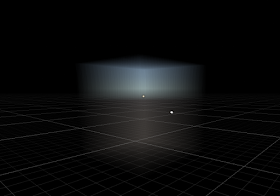Thesis Progress - Noise Map

In another around of research, I found a toolkit and try to use it for my project. Resource: https://github.com/mtwoodard/TextureGenerator It's a 3D texture generator designed for raymarching clouds. As we know, the process of my project includes the steps of asset shape then blurred by noise map. Both of them are based on 3D texture. The initial idea was to apply perlin and worely noise, cuz that's the method introduced by many paper. But now, I got this tool which makes it easier. From last blog, I already had a framework that can drive the 3D texture for some extent. And the noise map makes it pretty close to the final result. Here's what it looks like and it makes me HAPPY. There's an example in the toolkit , I applied it with my 3D texture script. It's not that clear now, then I juggled with some parameters on Blur Material. Transparency: 0.4 OpacityCorrection: 2.4 Then the outcome shows some really nice work. And each of those plane is attached to texture





